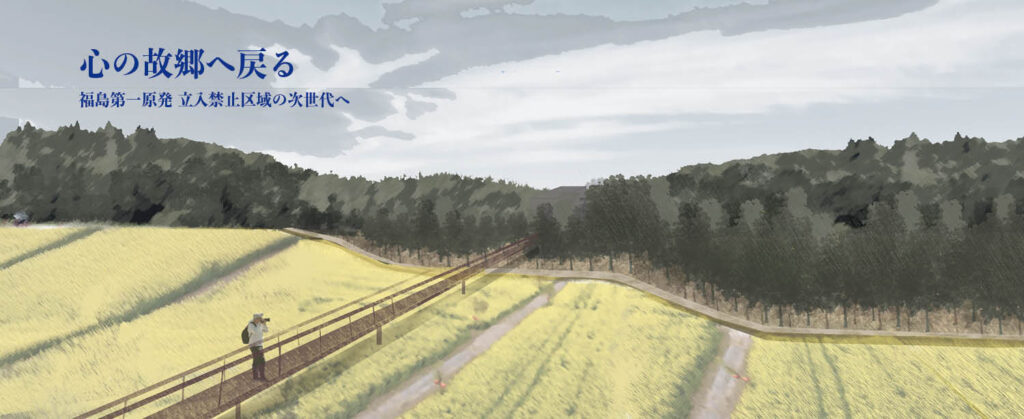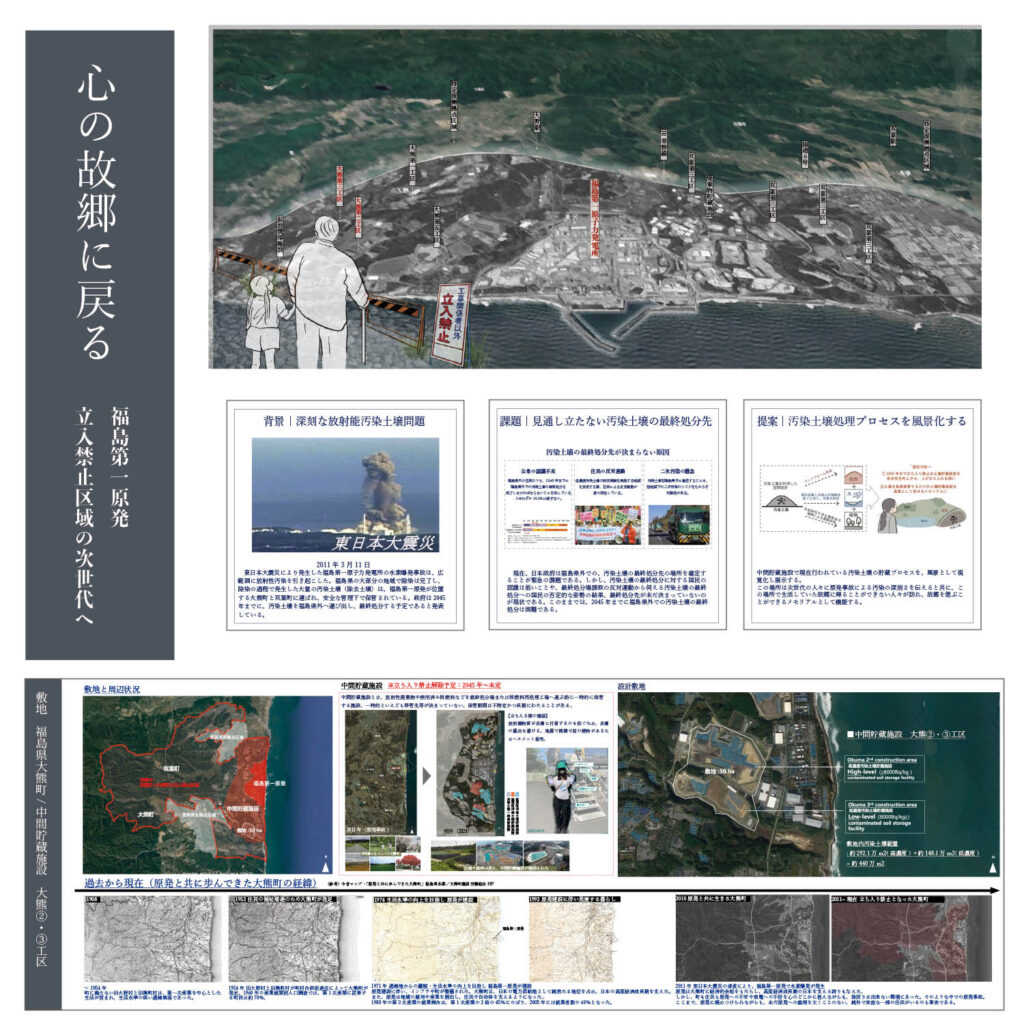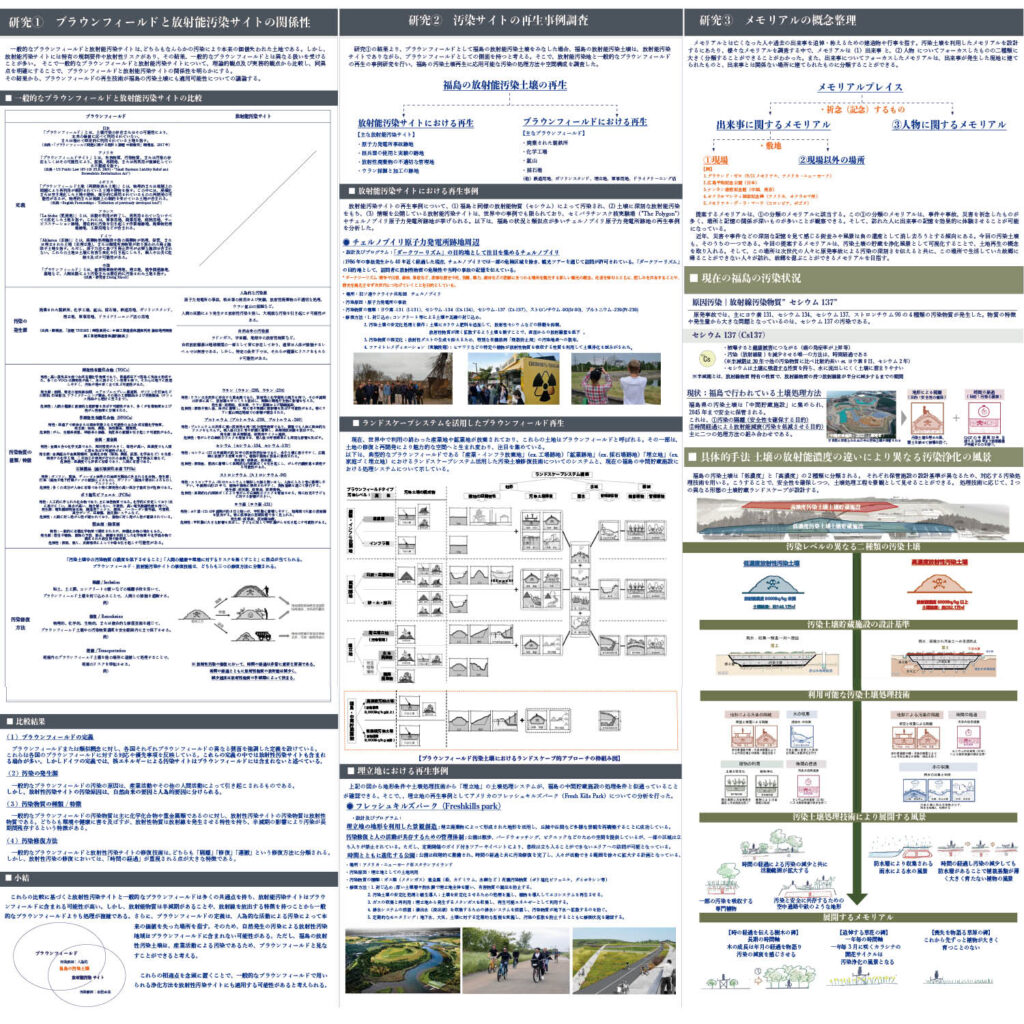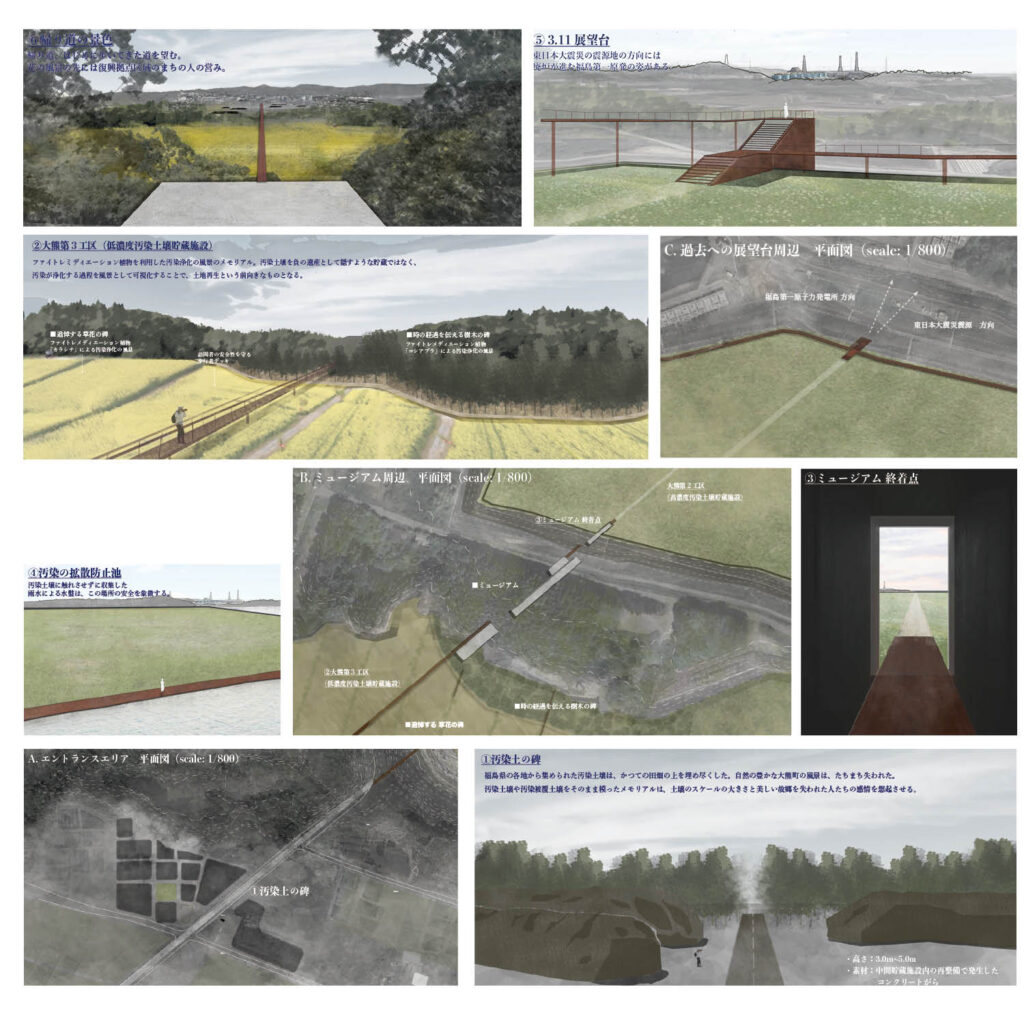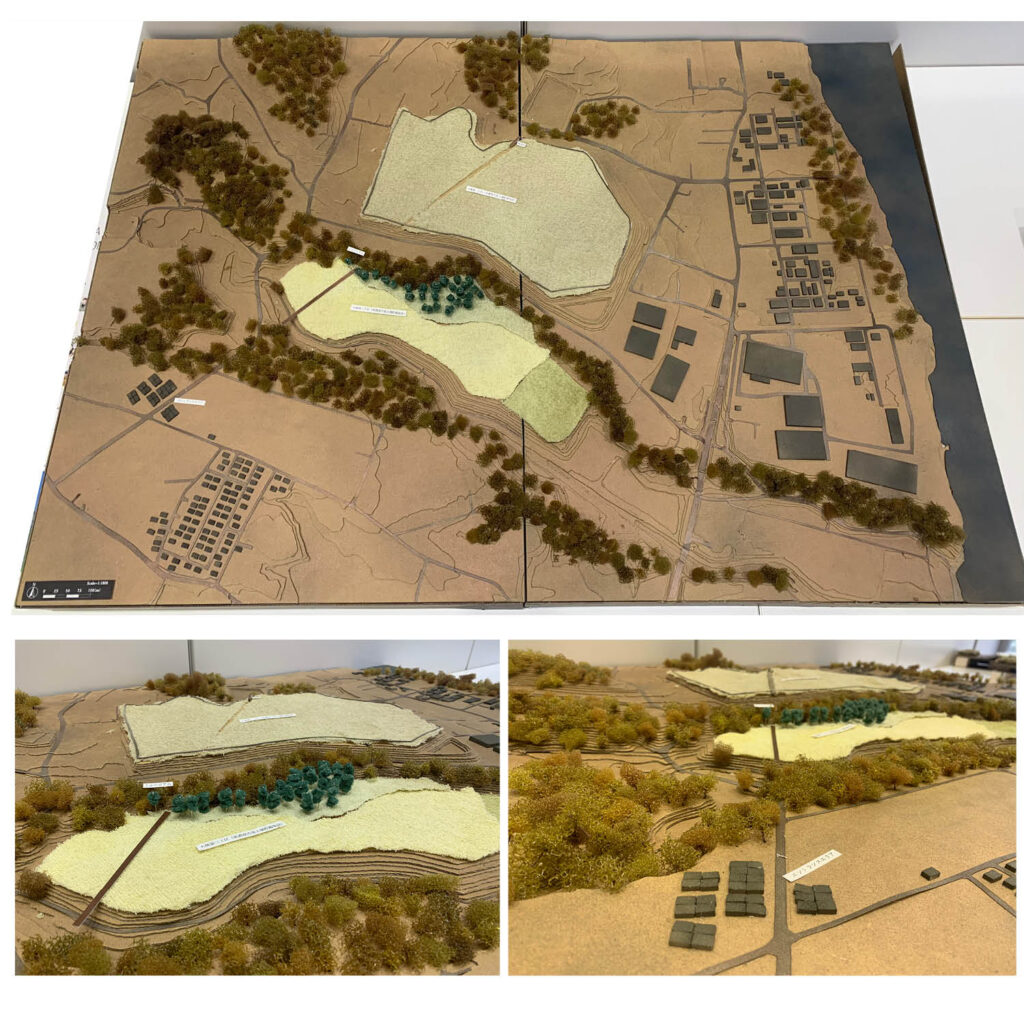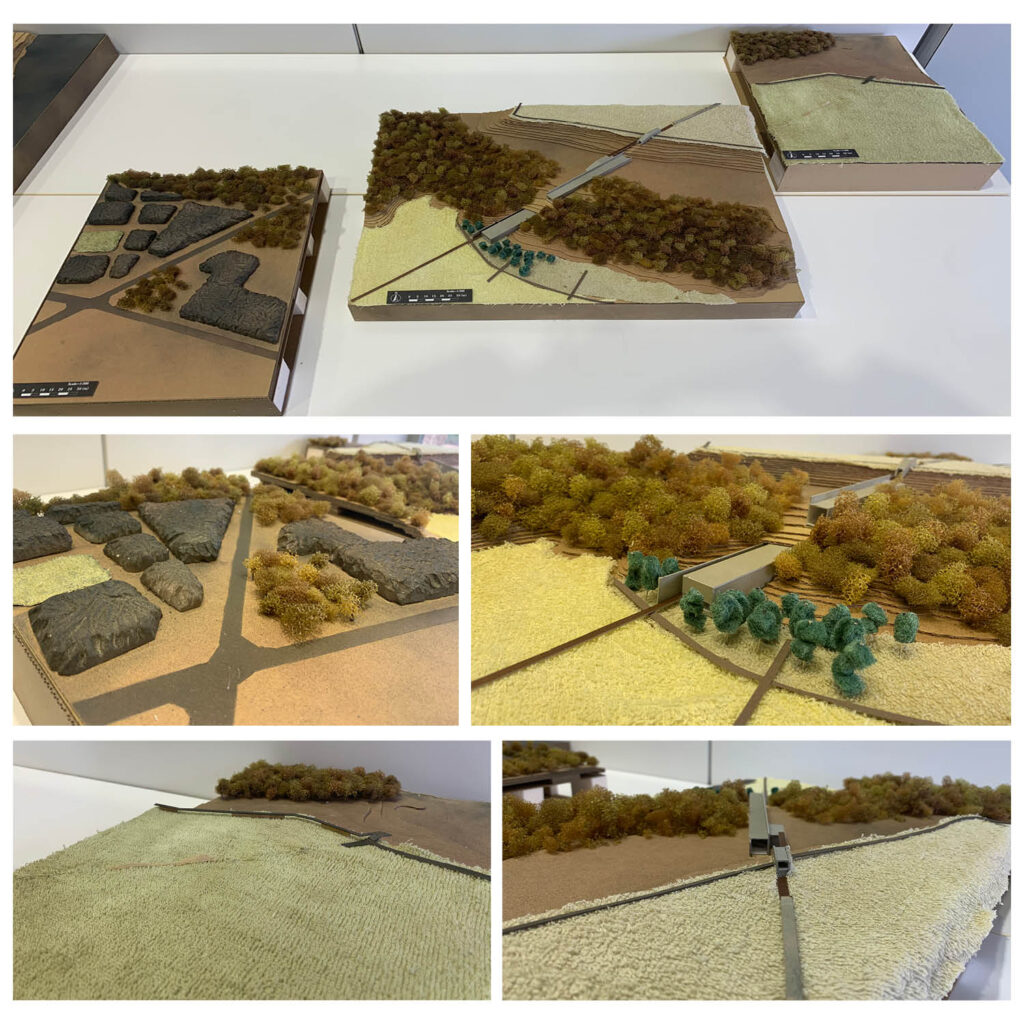心の故郷に戻る〜福島第一原発立入禁止区域の次世代へ〜
山本 祐子
Landscape strategy for Removed soil from the Fukushima Daiichi nuclear power station accident
Yuko Yamamoto
- JP
- EN
- hibiya_landscape_design_student_exhibition_2025_award_for_good
- INCENTIVE_AWARD
- 日比谷ランドスケープデザイン展2025_優秀賞
- 奨励賞
心の故郷に戻る〜福島第一原発立入禁止区域の次世代へ〜
山本 祐子
Landscape strategy for Removed soil from the Fukushima Daiichi nuclear power station accident
Yuko Yamamoto
2011年の福島第一原発事故によって発生した放射能汚染土壌(除去土壌)の最終処分の課題について検討する。現在、福島県の中間貯蔵施設には、約1,330万m3の汚染土壌が一時的に保管されている。この施設の建設は、最終処分を福島県外で実施するという条件の下で合意されたものであり、政府は2045年までに汚染土壌を福島県外で最終処分する必要がある。しかし、汚染土壌に対する社会の消極的な風潮や二次汚染の懸念などにより、現時点で汚染土壌の最終処分先が決まっていない。
そこで本研究は、ランドスケープデザインの観点から汚染土壌の最終処分方法について検討を行い、中間貯蔵施設の中で風景と共に汚染土壌を最終処分する方法を提案する。
This study examines the challenges associated with the final disposal of contaminated soil (removed soil) generated by the Fukushima Daiichi nuclear disaster in 2011. Currently, approximately 13.3 million cubic meters of contaminated soil are temporarily stored in an interim storage facility in Fukushima Prefecture. The facility was established under the condition that final disposal would take place outside Fukushima, and the government is required to complete this process by 2045. However, due to public reluctance toward contaminated soil and concerns about secondary pollution, no final disposal site has been determined.
This research explores disposal methods from a landscape design perspective and proposes an approach to permanently dispose of the contaminated soil within the interim storage facility itself, integrating it into the surrounding landscape.
